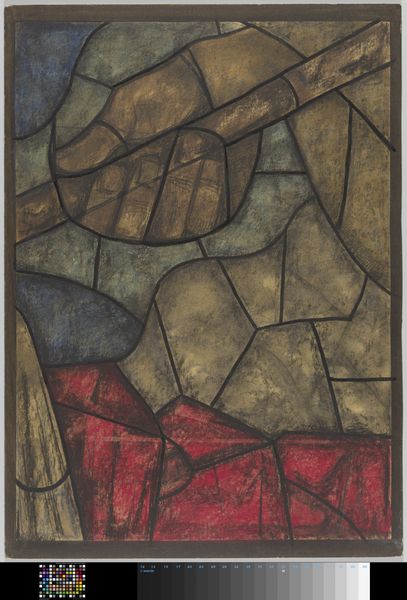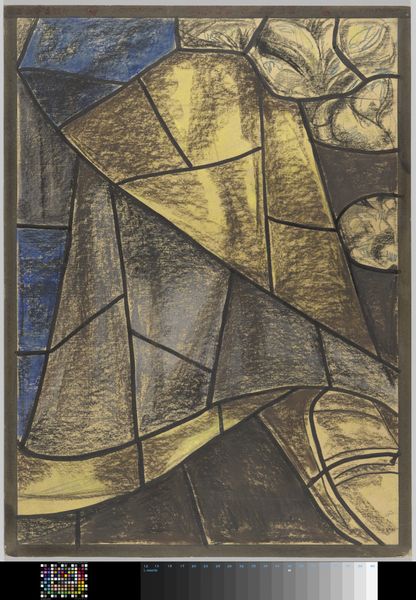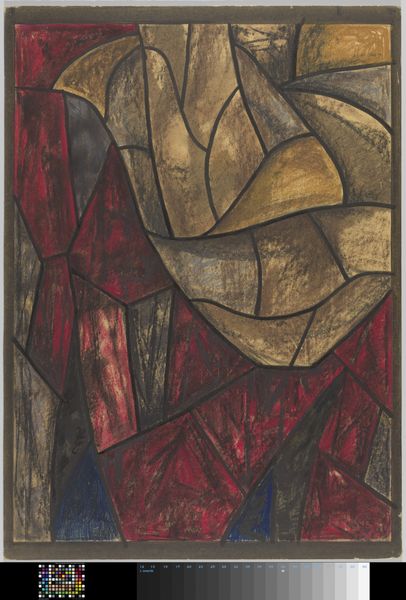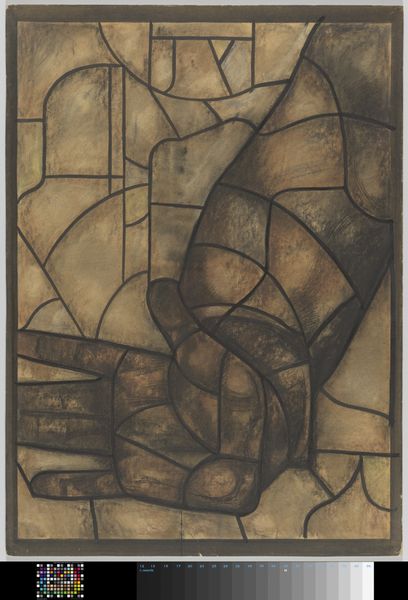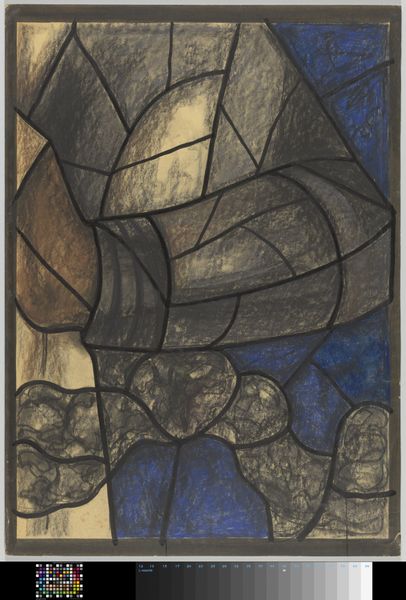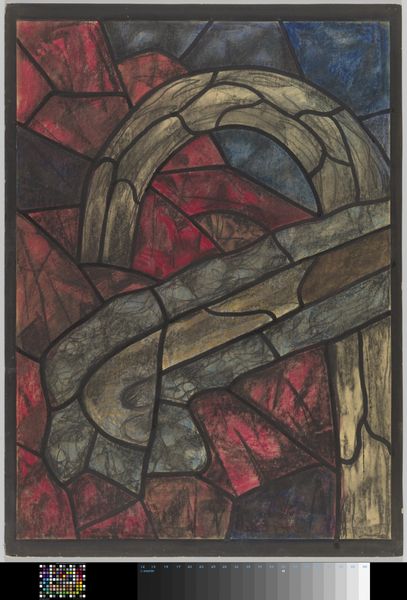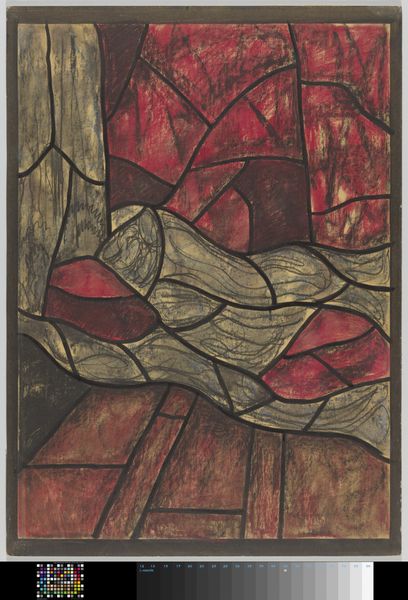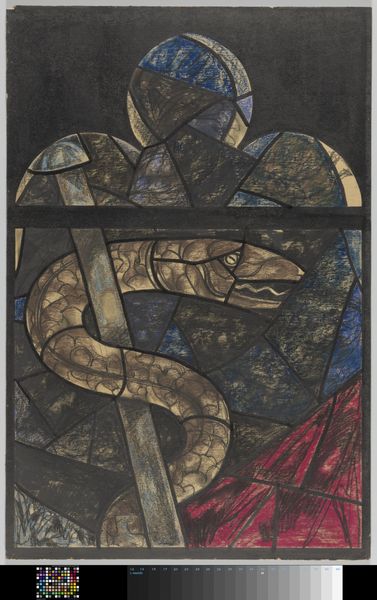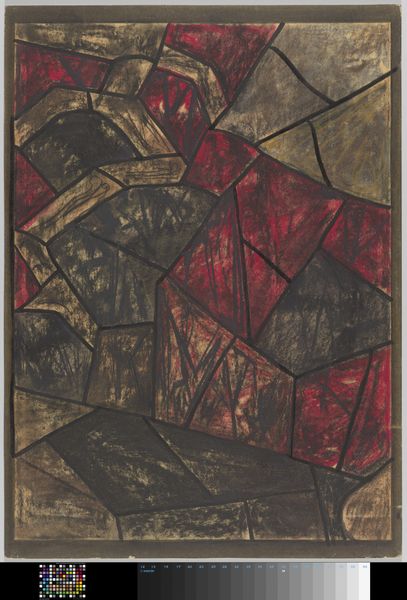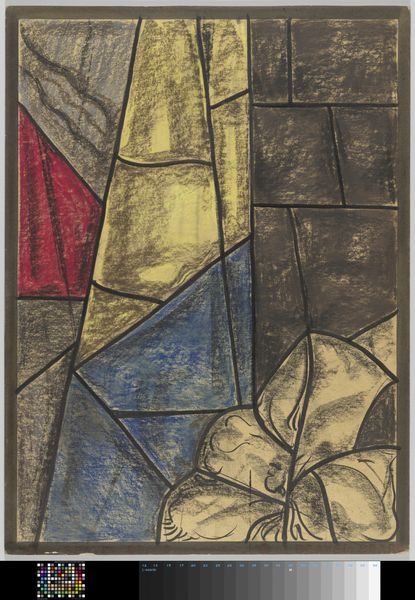
Ontwerp voor raam in het Noordertransept in de Dom te Utrecht c. 1934
0:00
0:00
drawing, mixed-media, paper
#
drawing
#
mixed-media
#
toned paper
#
abstract painting
#
paper
#
abstract
#
mixed media
#
modernism
Dimensions: height 1123 mm, width 807 mm
Copyright: Rijks Museum: Open Domain
Curator: Before us, we have Richard Nicolaüs Roland Holst's "Ontwerp voor raam in het Noordertransept in de Dom te Utrecht," a mixed-media drawing on paper, dating circa 1934. Editor: It gives off the impression of subdued grandeur. The color palette is quite limited – predominantly earth tones punctuated by stark reds and blues – and the stark outlines add a degree of monumentality. Curator: Roland Holst, deeply influenced by symbolism and socialism, often sought to integrate art with public life, making it a vehicle for conveying social and ethical ideals. This particular design, meant for a stained-glass window in Utrecht's cathedral, reveals a fascinating convergence of his artistic philosophy and societal commitment. Editor: I’m immediately drawn to how the composition functions independently of its intended medium. Look at the segmented construction, each piece a distinct field of tone and hue, creating an abstract field before coalescing into figures, or what might be considered symbolic references. The forms almost mimic the fractured nature of modern existence. Curator: Absolutely. He uses abstract forms to invoke specific ideas, connecting to broader currents of modernism. Roland Holst lived through both world wars, witnessing drastic shifts in social, economic, and political orders. The design likely seeks to resonate with that era. The strong vertical lines project an aura of resilience, perhaps reflective of a community grappling with turmoil. Editor: Notice how the heavy black lines define these segments of color? They impose an underlying structure— almost authoritarian— and yet within each section, we see a dynamic blending of tones, suggesting that there remains room for expression within pre-ordained boundaries. Curator: Exactly, his background in decorative arts is clear in his use of form. In the context of interwar Netherlands, consider the re-establishment of faith in social and spiritual values within community rebuilding following the Great War, the work is perhaps less somber and more optimistic than initially apparent. Editor: So, through this formal reading, it moves past a staid stained-glass design to suggest complex relationships: faith and modernity, chaos and order, tradition and revolution… Curator: Yes, viewing this design reveals a poignant interaction of aesthetic choices intertwined with its original setting. Editor: I appreciate seeing beyond its mere utility as a design. There’s more to consider about its individual components in total harmony.
Comments
No comments
Be the first to comment and join the conversation on the ultimate creative platform.
